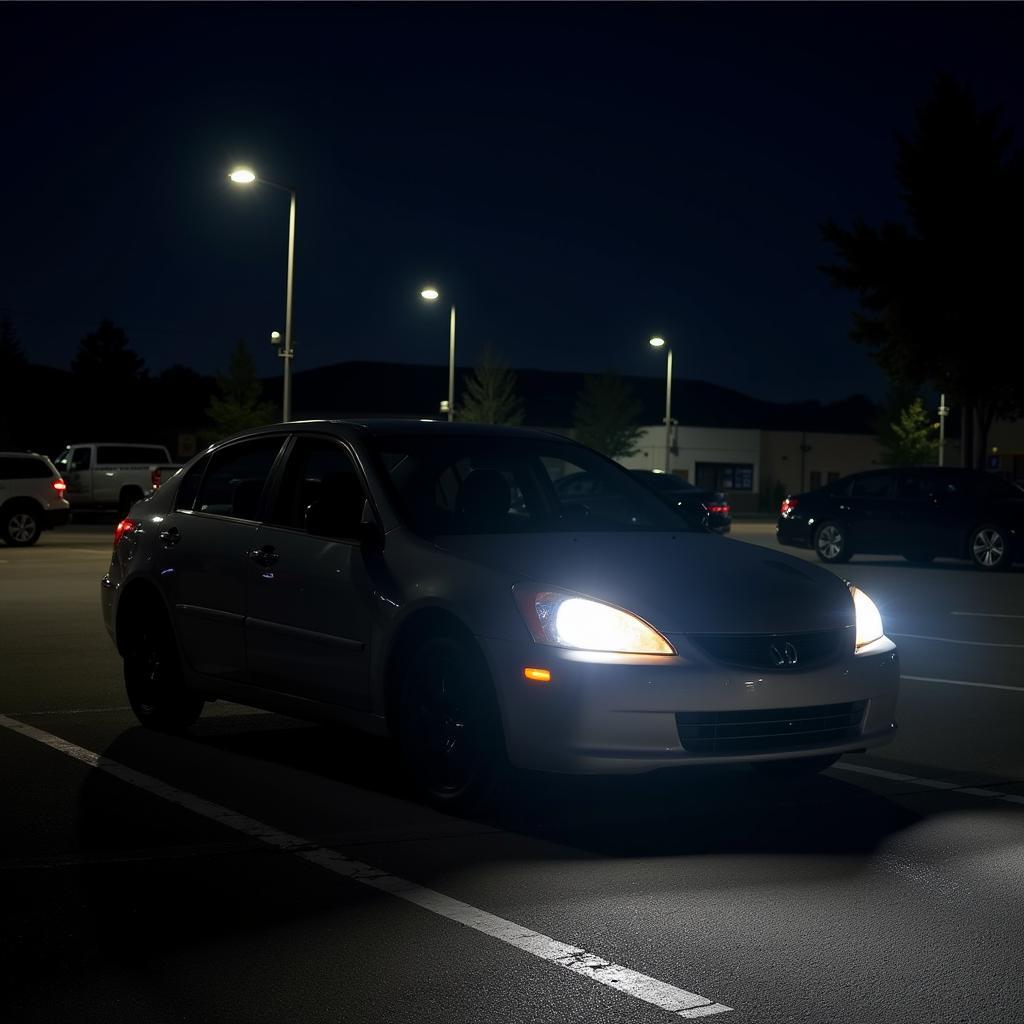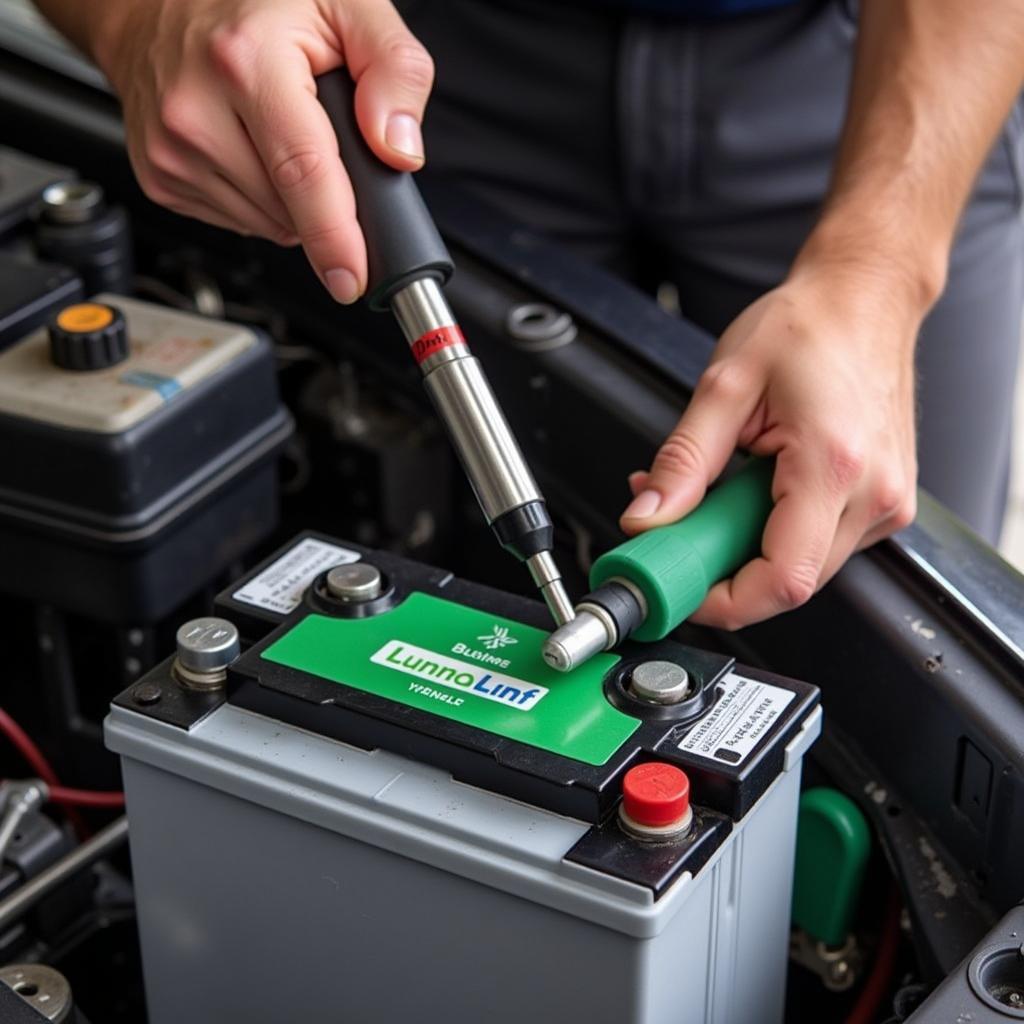If your car battery is dead, it can be a frustrating and inconvenient experience. This comprehensive guide will walk you through the common causes, troubleshooting steps, and solutions for a dead car battery, empowering you to get back on the road quickly. From simple jump-starts to more complex diagnostic procedures, we’ll cover everything you need to know.
Why is My Car Battery Dead?
A dead car battery can stem from several reasons, ranging from simple user error to more complex electrical issues. Understanding the root cause is crucial for finding the right solution.
- Leaving Lights On: One of the most common culprits is accidentally leaving headlights, interior lights, or even the radio on for an extended period while the engine is off. This drains the battery, leaving you stranded.
- Extreme Temperatures: Both extreme heat and cold can significantly impact battery performance. Heat can accelerate the chemical reactions within the battery, leading to faster discharge. Cold temperatures can thicken the battery’s internal fluids, making it harder for the battery to deliver power.
- Old Age: Car batteries have a limited lifespan, typically around 3-5 years. As a battery ages, its ability to hold a charge diminishes.
- Parasitic Drain: Even when your car is off, certain electrical components can continue to draw small amounts of power. This “parasitic drain” can slowly deplete the battery over time, especially if there’s a faulty component or wiring issue.
- Alternator Problems: The alternator recharges the battery while the engine is running. A malfunctioning alternator can prevent the battery from being recharged, ultimately leading to a dead battery.
- Corroded Terminals: Corrosion on the battery terminals can disrupt the flow of electricity, preventing the battery from starting the car or receiving a charge.
 Car Battery Dead Due to Lights Left On
Car Battery Dead Due to Lights Left On
How to Troubleshoot a Dead Car Battery
Before jumping to conclusions, it’s essential to troubleshoot the problem to determine the exact cause.
- Check the Lights: Start by checking if any lights were left on inside or outside the car. If so, turn them off and try starting the car again.
- Inspect the Battery Terminals: Look for any signs of corrosion on the battery terminals. White, powdery residue indicates corrosion, which can hinder the flow of electricity.
- Try Jump Starting: If the terminals look clean, attempt to jump-start the car using jumper cables and another vehicle or a portable jump starter.
- Test the Alternator: If the car starts after a jump-start, but the battery dies again shortly after, the alternator might be the problem. You can test the alternator’s voltage output using a multimeter.
 Inspecting Car Battery Terminals for Corrosion
Inspecting Car Battery Terminals for Corrosion
Solutions for a Dead Car Battery
Once you’ve identified the cause of the dead battery, you can implement the appropriate solution.
- Jump Starting: A jump-start is a temporary fix that can get your car running again if the battery is simply discharged. Be sure to follow proper jump-starting procedures to avoid any safety hazards.
- Battery Charging: If the battery is old or significantly discharged, you might need to charge it using a battery charger. This provides a more thorough charge than a jump-start.
- Battery Replacement: If the battery is old or damaged, it’s likely time for a replacement. Consult your car’s owner’s manual for the correct battery specifications.
- Alternator Repair or Replacement: A malfunctioning alternator requires professional repair or replacement.
- Cleaning Corroded Terminals: Clean corroded terminals using a wire brush and a mixture of baking soda and water.
What to Do if Your Car Battery Keeps Dying?
If you find yourself dealing with a dead battery repeatedly, it’s a sign of a deeper underlying issue. Don’t ignore this recurring problem! Consult a qualified mechanic for a thorough diagnosis and repair.
Conclusion
A dead car battery can be a nuisance, but understanding the causes and solutions can help you handle the situation effectively. By following the troubleshooting steps and implementing the appropriate solution, you can get your car back on the road and prevent future battery problems. Remember, regular maintenance and timely replacement can significantly extend the life of your car battery. If your car battery is dead, don’t panic, use this guide to troubleshoot and solve the problem.
FAQ
- How long does a car battery last? Typically, car batteries last between 3-5 years.
- Can I jump-start my car myself? Yes, but follow safety precautions carefully.
- How much does a new car battery cost? The price varies depending on the type and brand, but expect to pay between $50 and $200.
- What are the signs of a bad alternator? Dimming headlights, flickering dashboard lights, and strange noises from the engine compartment are potential signs of a bad alternator.
- How can I prevent my car battery from dying? Regularly check your battery terminals for corrosion, avoid leaving lights on, and have your alternator checked periodically.
- What should I do if my car won’t start after a jump-start? The problem might be more than just a dead battery. Consult a mechanic.
- Can extreme temperatures affect my car battery? Yes, both extreme heat and cold can significantly impact battery performance.


